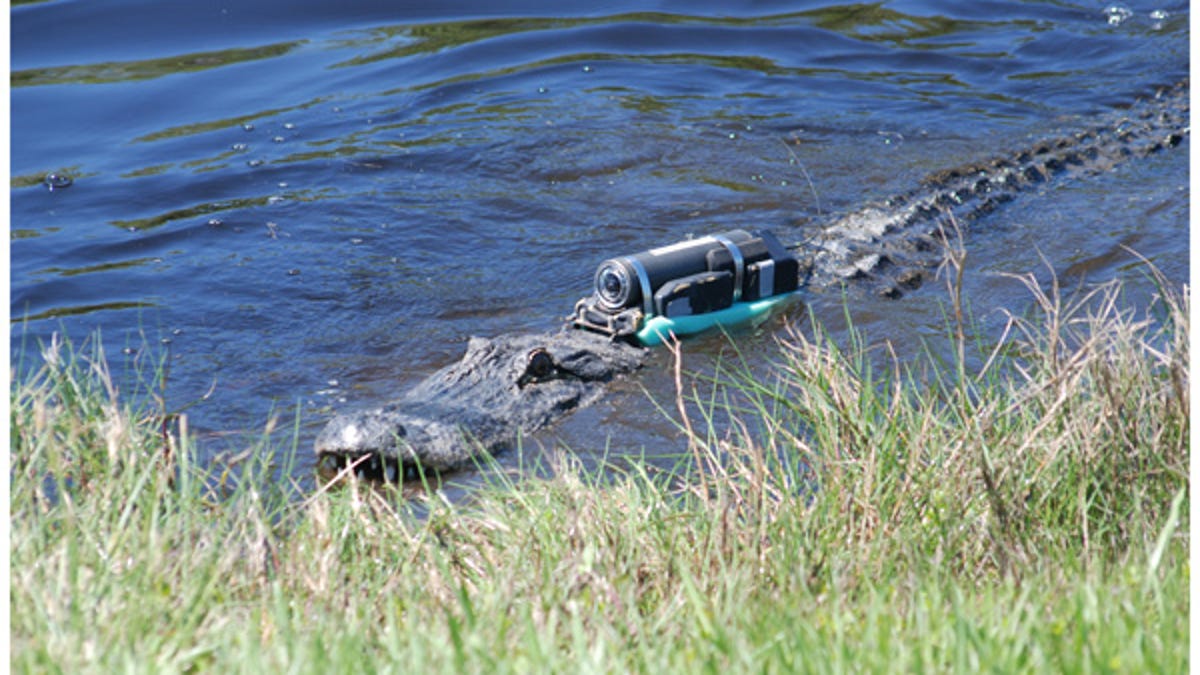Secret life of alligators revealed via Crittercam
Wearing National Geographic's Crittercams like backpacks, the endangered American alligator has revealed its mysterious night-time activities.

(Credit: University of Florida)
Wearing National Geographic's Crittercams like backpacks, the endangered American alligator has revealed its mysterious night-time activities.
Studying animals can be a tricky prospect. If they detect the presence of a human in their environment their behaviour might very well alter accordingly, and surveillance cameras, while useful, can't possibly follow a creature everywhere.
Cue National Geographic's Crittercams, video cameras designed to be worn by animals in the wild so that their activities can be tracked. They've been around for some time — since 2001, actually — and have helped scientists study all sorts of animals.
Apex predators can be particularly difficult to study because of the dangers they pose, and their feeding habits and activity patterns are largely mysterious. Thanks to the Crittercams, though, we now have new insight into the feeding habits of American alligators.
Researchers at the University of Florida fitted the Crittercams on to 15 alligators at the Merritt Island National Wildlife Refuge and Guana River in coastal Florida. The units housed a camera, as well as acceleration, depth and temperature sensors, red LEDs and a battery pack with enough power to record six to eight hours of footage. Because of this limitation, the cameras were set to record for half-hour or hour-long intervals, and were deployed for a period of one or two days before retrieval.
What they discovered is that the alligators do most of their hunting at night — but the highest success rate occurred during the morning hours, from 4am until 9am, and that most successful hunts were conducted underwater. The lowest success rate actually occurred between the hours of 6pm and 4am — which, conversely, is when the alligators most actively hunt.
You can read the full study online in the journal PLOS One.
Via www.plosone.org

